#Akira 1982 Manga
Explore tagged Tumblr posts
Text
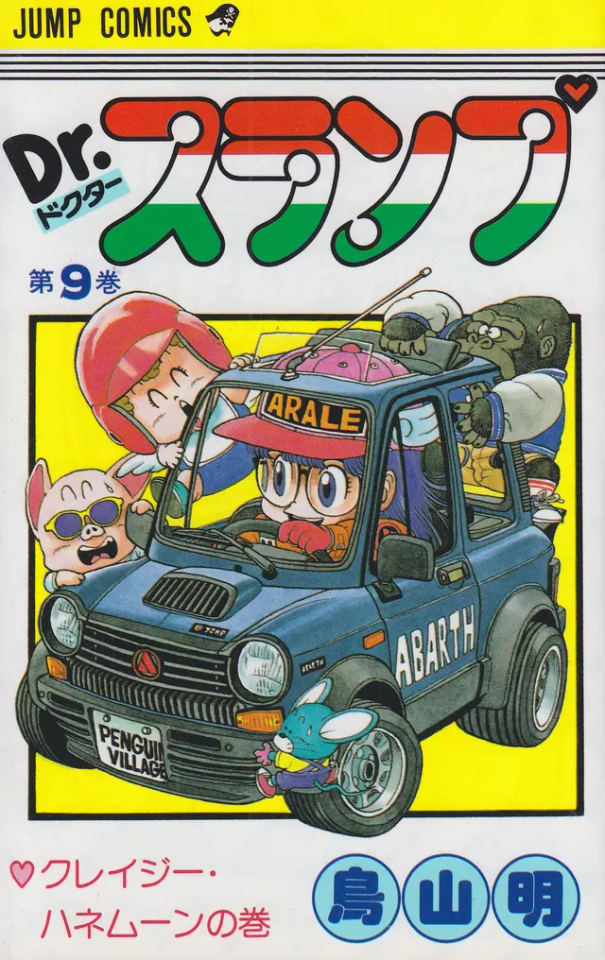
144 notes
·
View notes
Text

#banana fish#shoujo#seinen#my post#manga#manga cap#1980s#1985#1982#akimi yoshida#1994#garden of light#ash lynx#aslan jade callenreese#akira ibe#sing soo ling
24 notes
·
View notes
Text
On December 6, 1982, Tokyo is destroyed in what is claimed to be a nuclear attack, which prompts world war III. (Akira, Manga)

#nerds yearbook#comic book#manga art#manga#akira#december#1982#tokyo#neo tokyo#armageddon#apocalypse#katsuhiro otomo#esp#paranormal
5 notes
·
View notes
Text
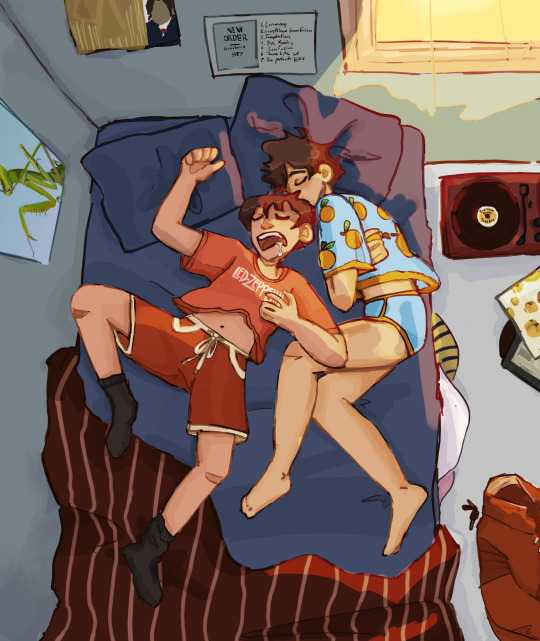
they deserve a solid nap
#don’t tag either of them as kin or whatever#name all the albums and you are cool#my art#good morning america#akira#kaneda#kaneda shotaro#kaneda akira#kei#kei akira#kanekei#kanakei#kanekei akira#akira 1988#akira 1982#akira movie#akira manga#akira fanart#kei isn’t in underwear they are shorts based on ones i am wearing RIGHT NOW!#i thought i should say that so nobody is a freak because this fandom gross as hell
55 notes
·
View notes
Text

From AKIRA (the manga, 1982) by Katsuhiro Otomo
2K notes
·
View notes
Text


AKIRA / アキラ (1988)
dir. Katsuhiro Otomo
produced by Ryōhei Suzuki and Shunzō Katō, and written by Otomo and Izo Hashimoto, based on Otomo's 1982 manga Akira.
25 notes
·
View notes
Text
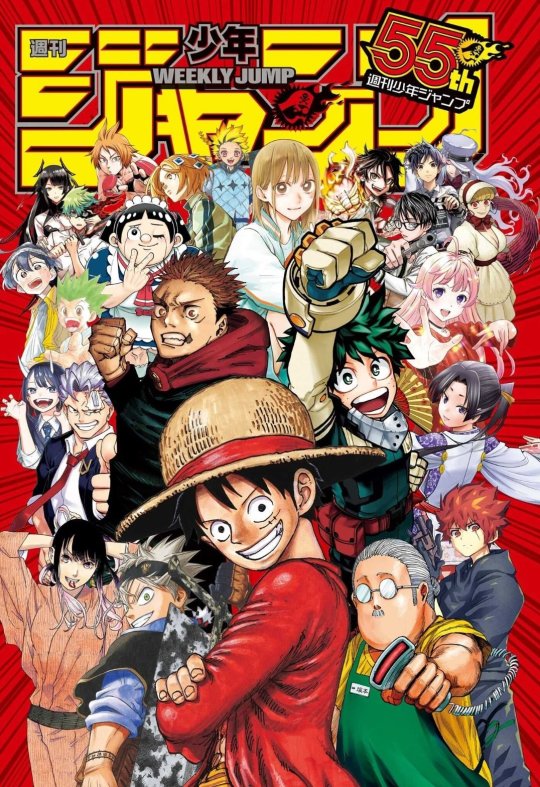
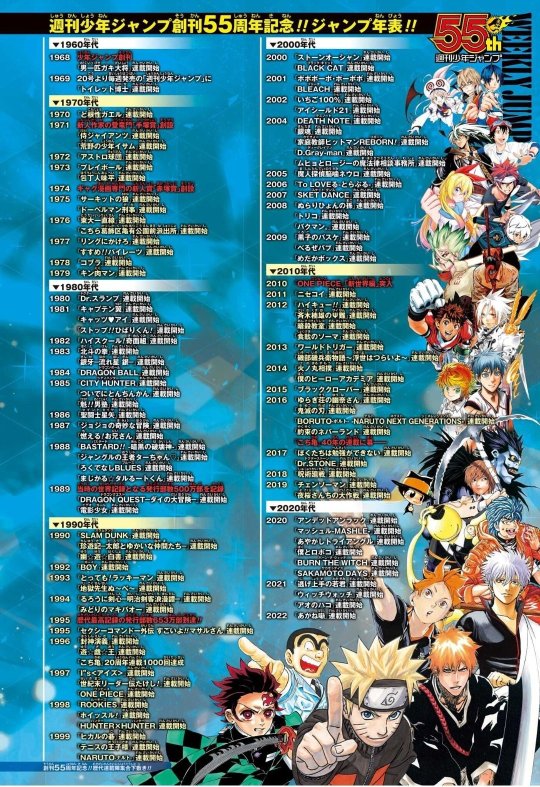
Weekly Shonen Jump 55th anniversary appendix in Weekly Shonen Jump 2023 issue #33
1968 Weekly Shonen Jump Issue #1 Otoko Ippiki Gaki-Daisho by Hiroshi Motomiya 1969 Dr. Toilet by Kazuyoshi Torii 1970 The Gutsy Frog by Yasumi Yoshizawa 1971 Tezuka Manga Award 1st Edition Samurai Giants by Ikki Kajiwara & Ko Inoue Boy of the Wilderness Isamu by Soji Yamakawa & Noboru Kawasaki 1972 Astro Kyudan by Shiro Tōzaki & Norihiro Nakajima 1973 Play Ball by Akio Chiba Hochonin Ajihei by Jiro Gyu & Jo Big 1974 Akatsuka Manga Award 1st Edition 1975 The Circuit Wolf by Satoshi Ikezawa Doberman Deka by Buronson & Shinji Hiramatsu 1976 Toudai Icchokusen by Yoshinori Kobayashi Kochikame by Osamu Akimoto 1977 Ring ni Kakero by Masami Kurumada Susume!! Pirates by Hisashi Eguchi 1978 Cobra by Buichi Terasawa 1979 Kinnikuman by Yudetamago 1980 Dr. Slump by Akira Toriyama 1981 Captain Tsubasa by Yoichi Takahashi Cat's Eye by Tsukasa Hojo Stop!! Hibari-kun! by Hisashi Eguchi 1982 High School! Kimengumi by Motoei Shinzawa 1983 Fist of the North Star by Buronson & Tetsuo Hara Ginga -Nagareboshi Gin- by Yoshihiro Takahashi 1984 DRAGON BALL by Akira Toriyama 1985 City Hunter by Tsukasa Hojo Miraculous Tonchinkan by Koichi Endo Sakigake!! Otokojuku by Akira Miyashita 1986 Saint Seiya by Masami Kurumada 1987 JoJo's Bizarre Adventure by Hirohiko Araki The Burning Wild Man by Tadashi Sato 1988 Bastard!! by Kazushi Hagiwara Jungle King Tar-chan by Masaya Tokuhiro Rokudenashi BLUES by Masanori Morita Magical Taluluto by Tatsuya Egawa 1989 Weekly Shonen Jump reaches 5.000.000 copies in circulation Dragon Quest: The Great Adventure of Dai by Riku Sanjo & Koji Inada Video Girl Ai by Masakazu Katsura 1990 SLAM DUNK by Takehiko Inoue Chinyuki by Man Gataro Yu Yu Hakusho by Yoshihiro Togashi 1992 Hareluya II Boy by Haruto Umezawa 1993 Tottemo! Luckyman by Hiroshi Gamo Hell Teacher Nube by Makura Sho & Takeshi Okano 1994 Midori no Makibao by Tsunomaru Rurouni Kenshin by Nobuhiro Watsuki 1995 Weekly Shonen Jump reaches 6.530.000 copies in circulation Sexy Commando Gaiden: Sugoi yo!! Masaru-san by Kyosuke Usuta 1996 Hoshin Engi by Ryu Fujisaki Yu-Gi-Oh! by Kazuki Takahashi Kochikame 20th Anniversary & Chapter 1000 1997 I's by Masakazu Katsura Seikimatsu Leader den Takeshi! by Mitsutoshi Shimabukuro ONE PIECE by Eiichiro Oda 1998 Rookies by Masanori Morita Whistle! by Daisuke Higuchi HUNTERXHUNTER by Yoshihiro Togashi 1999 Hikaru no Go by Yumi Hotta & Takeshi Obata The Prince of Tennis by Takeshi Konomi NARUTO by Masashi Kishimoto 2000 JoJo's Bizarre Adventure: Stone Ocean by Hirohiko Araki BLACK CAT by Kentaro Yabuki 2001 Bobobobo Bobobo by Yoshio Sawai BLEACH by Tite Kubo 2002 Strawberry 100% by Mizuki Kawashita Eyeshield 21 by Riichiro Inagaki & Yusuke Murata 2004 Death Note by Tsugumi Ohba & Takeshi Obata Gintama by Hideaki Sorachi Katekyo Hitman Reborn! by Akira Amano D.Gray-man by Katsura Hoshino Muhyo & Roji's Bureau of Supernatural Investigation by Yoshiyuki Nishi 2005 Neuro: Supernatural Detective by Yusei Matsui 2006 To Love Ru by Saki Hasemi & Kentaro Yabuki 2007 Sket Dance by Kenta Shinohara 2008 Nura: Rise of the Yokai Clan by Hiroshi Shiibashi Toriko by Mitsutoshi Shimabukuro Bakuman. by Tsugumi Ohba & Takeshi Obata 2009 Kuroko's Basketball by Tadatoshi Fujimaki Beelzebub by Ryuhei Tamura Medaka Box by Nisio Isin & Akira Akatsuki 2010 ONE PIECE New World Begins 2011 Nisekoi by Naoshi Komi 2012 Haikyu!! by Haruichi Furudate The Disastrous Life of Saiki K. by Shuichi Aso Assassination Classroom by Yusei Matsui Food Wars: Shokugeki no Soma by Yuto Tsukuda & Shun Saeki 2013 World Trigger by Daisuke Ashihara Isobe Isobee Monogatari by Ryo Nakama 2014 Hinomaru Zumo by Kawada My Hero Academia by Kohei Horikoshi 2015 Black Clover by Yuki Tabata 2016 Yuuna and the Haunted Hot Springs by Tadahiro Miura Kimetsu no Yaiba by Koyoharu Gotouge BORUTO by Mikio Ikemoto & Ukyo Kodachi The Promised Neverland by Kaiu Shirai & Posuka Demizu Kochikame 40th Anniversary and Serialization End 2017 We Never Learn by Taishi Tsutsui Dr. STONE by Riichiro Inagaki & Boichi 2018 Jujutsu Kaisen by Akutami Gege
2019 Chainsaw Man by Tatsuki Fujimoto Mission: Yozakura Family by Hitsuji Gondaira 2020 Undead Unluck by Yoshifumi Tozuka MASHLE by Hajime Komoto Ayakashi Triangle by Kentaro Yabuki Me & Roboco by Shuhei Miyazaki BURN THE WITCH by Tite Kubo SAKAMOTO DAYS by Yuto Suzuki 2021 The Elusive Samurai by Yusei Matsui WITCH WATCH by Kenta Shinohara Blue Box by Kouji Miura 2022 Akane Banashi by Yuki Suenaga & Takamasa Moue
#Weekly Shone Jump#One Piece#Dragon Ball#Naruto#Slam Dunk#KochiKame#Demon Slayer#Bleach#JoJo's Bizarre Adventure#Fist of the North Star#My Hero Academia#Hunter x Hunter#Jujutsu Kaisen#Yu Yu Hakusho#Kinnikuman#Rurouni Kenshin#The Prince of Tennis#Rokudenashi Blues#Gintama#Haikyu!!#manga#long post#late post
228 notes
·
View notes
Text
First post!
i’m a hardcore fan of akira, both the manga and the movie, and i wanted to make a little blog dedicated just to it, and everything i know about it!
it’s been my favorite movie and manga for years, and i’ve rewatched it wayy too many timed to count.. i’m a fanatic
Akira, made in 1988, is a japanese animated movie and manga by Katsuhiro Otomo, the manga was serialized in magazines and various other publications from 1982-1990. The movie was 124 minutes long, with 24 frames per second. That sums out to 178,560 frames, all handpainted! Although there was some cgi used, it was minimal, only assisting with Doctor Ōnishi’s pattern indicator, as well as minor plotting and mapping. The manga is a feat as well, with 6 volumes and over 3,000 pages.
When the movie was created, it only loosely spanned the first 2 volumes, making an entirely different ending to wrap up the shortened story. Because of this more summarized plot, the movie to some can be confusing at first, but when paying careful attention, each watch can reveal an entirely new piece of information that can tie the masterpiece together. Katsuhiro Otomo had mentioned in an interview, featured in the deluxe version in the dvd, that he had in fact used the movie to help him work out the ending of the manga, as it was not finished at the time of the movies creation. Considering that, it can be said that both medias endings are canon, existing truthfully in different universes.
Akira is admirable not only for its intelligent plot and timeless art, but also for it’s incredible characters. Shotaro Kaneda and Tetsuo Shima, in both the manga and the movie, show a complicated relationship. They have a brotherly bond, based on growing up together through hardships, but there are insecurities and inferiorities bubbling under the surface. Kaneda takes on the role of a protector, trying to fight Tetsuo’s battles. But Tetsuo strives to prove himself Kaneda’s equal, comparing himself and his friend consistently, leading to a deep seated sense of inferiority towards his friend. When he gets the power, although it can be argued that his insanity derives from the power being too much for him to handle, it also states multiple times in both the movie and the manga that Tetsuo was causing his own undoing, letting his negative emotions take control of his actions. It is hard to say that there is any one pure villain, as each character is so thoroughly fleshed out that each one has their own flaws, some worse than others.
The movie was a huge advancement of its time, being one of the first japanese animated films to use what is known as ‘Pre-scored dialogue’, A.K.A recording the voice acting first while using the simple animatics as a guide, then animating fully, personalizing the characters movements with the voice acting. This gives Akira a unique and active vibe, capturing your attention with its ability to capture the emotions of the voice acting perfectly. Fun fact, one of the main animators of Akira, Makiko Futaki, went on to become a lead animator of Studio Ghibli films such as Kiki’s Delivery Service and Howl’s Moving Castle.
Although I might be a little biased.. I would have to say Akira is one of the top animated films ever made, and I hope that I can meet more people who love it too!

#akira 1988#katsuhiro otomo#kaneda#tetsuo shima#anime#manga#shotaro#shima#japanese#animation#art#movies
13 notes
·
View notes
Text
The character Arara Shimayama is a parody of Akira Toriyama.
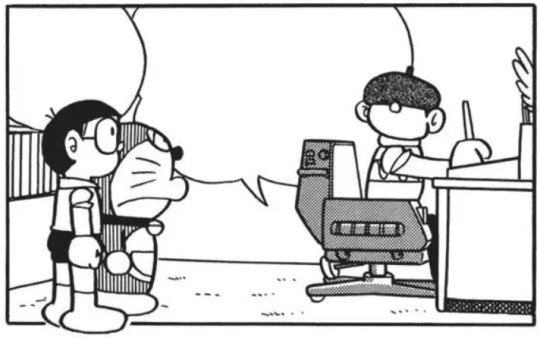
He is a manga artist who draws Dr. Stop, a parody of Dr. Slump.
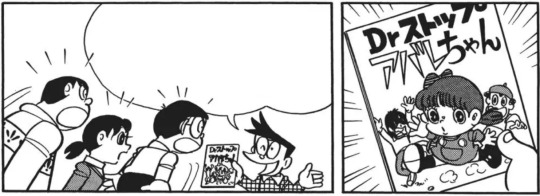
Source: まんがのつづき, 1982 (manga)
25 notes
·
View notes
Text
No one believes Sonic when he tells them Shadow did the Akira slide, and Shadow, since the manga was written in 1982, cannot confirm or deny the claim.
5 notes
·
View notes
Text

#banana fish#shoujo#seinen#my post#manga#manga cap#1980s#1985#1982#akimi yoshida#1994#garden of light#akira ibe#ash lynx#aslan jade callenreese
20 notes
·
View notes
Text

Kanekei 🌶️🍊
#don’t tag either as kin or whatever#my art#don’t mind the she/her kaneda i think she’s a lesbian#akira#akira 1988#akira 1982#akira manga#kaneda#kaneda shotaro#kei akira#akira kei#kanekei#kaneda x kei
33 notes
·
View notes
Text
thank you for the tag @atinylittledog!!! sorry i'm only getting to this now
1. Top 3 Ships: ryo/akira (devilman manga), char/amuro (UC gundam), snake/otacon (metal gear)?? these are all old though so if i had to choose something more recent... aziraphale/crowley (good omens TV), cloud/aerith (final fantasy vii), and suletta/miorine (gundam witch of mercury)? some of my fav things i've watched recently i didn't ship anything in them so it's hard!
2. First Ship hard to say but i think luke/tear from tales of the abyss was one of the first i was like ;3; about
3. Last Song enemy gene by of montreal
4. Last Movie i think it was the thing (1982)! i'm usually not a horror person but i really liked it. similar to alien
5. Currently Reading solutions and other problems by allie brosch. i was thinking about her and hyperbole and a half recently so i wanted to check it out. i'm enjoying it!
6. Currently Watching pluto on netflix! really good
7. Currently Consuming w-water??
8. Currently Craving a good nature walk since i haven't done one since like... idk last spring or something
tagging ummm i'm gonna tag some people who've recently interacted with my posts don't worry if you don't feel like doing this @vampfucker666 @naomibug @the-memes-must-flow @nodplus50pts
7 notes
·
View notes
Text

Celebrating Akira Toriyama: Mastermind Behind Generations of Joy
In the realm of manga and anime, few names shine as brightly as Akira Toriyama. His passing at the age of 68 has left fans worldwide reflecting on the indelible mark he has left on the industry and on their lives. Toriyama was not just a creator; he was a visionary who brought to life some of the most iconic and enduring works in the world of anime and gaming. His creations transcended cultural and generational boundaries, embedding themselves in the hearts of millions across the globe. Let's take a moment to celebrate the legacy of Akira Toriyama, focusing on his most influential works that continue to inspire and entertain.
Dragon Ball: More Than Just a Series
"Dragon Ball" is undeniably Toriyama's magnum opus. What started as a manga in 1984 quickly evolved into a global phenomenon, encompassing various anime series, movies, games, and merchandise. Following the adventures of Goku and his friends, "Dragon Ball" is a blend of action, comedy, and drama that captured the imagination of audiences everywhere. Its themes of friendship, perseverance, and the thrill of adventure resonate with fans, making it a foundational series that introduced many to the world of anime.
Dr. Slump: The Beginning of a Legacy
Before the worldwide success of "Dragon Ball," there was "Dr. Slump." This series, set in the whimsical Penguin Village, follows the comedic adventures of Arale Norimaki, a naïve android girl with superhuman strength, and her creator, Senbei Norimaki. "Dr. Slump" showcases Toriyama's unique humor and creativity, laying the groundwork for his future storytelling style. The series was a hit in Japan, earning Toriyama the Shogakukan Manga Award in 1982 and setting the stage for his later successes.
Venturing into the Gaming World: Dragon Quest and Chrono Trigger
Toriyama's influence extended beyond manga and anime into the realm of video games. His collaboration with Square Enix on the "Dragon Quest" series resulted in some of the most memorable character designs in gaming history. His artistic vision contributed to "Dragon Quest" becoming one of the most beloved RPG franchises worldwide.
"Chrono Trigger," another collaboration with Square Enix, further cemented Toriyama's legacy in the gaming industry. His character designs for this critically acclaimed RPG added depth and charm to an already compelling story, making it a timeless classic that continues to captivate new generations of gamers.
A Legacy That Lives On
Akira Toriyama's impact on anime, manga, and gaming is immeasurable. His works have not only entertained but also inspired countless individuals to pursue their own creative endeavors. As fans around the world mourn his passing, they also celebrate the joy and inspiration he brought into their lives. Toriyama's creations will continue to be cherished, studied, and enjoyed, ensuring his legacy will live on for generations to come.
In remembering Akira Toriyama, we are reminded of the power of storytelling and the boundless imagination of one man who dared to dream. His contributions to the worlds of anime and gaming will never be forgotten, serving as a beacon for aspiring creators everywhere. Thank you, Akira Toriyama, for sharing your vision with us and for the countless adventures that will continue to inspire awe and wonder in the hearts of fans old and new.
3 notes
·
View notes
Text
Title: Unraveling the Legacy of "Akira": A Glimpse into a Cyberpunk Masterpiece
Introduction
In the vast realm of anime and manga, few names resonate as profoundly as "Akira." A groundbreaking work of art that transcends its medium, "Akira" has left an indelible mark on pop culture and storytelling. Crafted by Katsuhiro Otomo, this cyberpunk masterpiece has captivated audiences since its inception in the late 1980s. Its influence spans beyond its genre, reaching into film, literature, and even fashion. Let's delve into the world of "Akira," exploring its origins, impact, and enduring legacy.
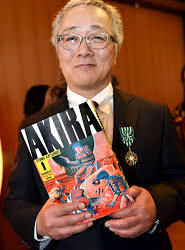

Origins and Creation
Katsuhiro Otomo first introduced "Akira" in 1982 as a manga series serialized in the pages of the monthly publication Young Magazine. This marked the beginning of a creative journey that would redefine the cyberpunk genre. Otomo's visionary storytelling and intricate artwork drew readers into a dystopian Tokyo known as Neo-Tokyo, a city recovering from the ashes of a devastating explosion that occurred in 1988. The narrative revolves around a group of friends caught in a web of government conspiracies, psychic powers, and societal turmoil.
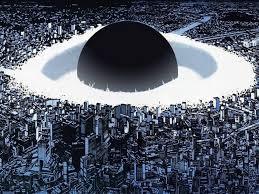

Impact and Influence
"Akira" didn't just captivate its audience; it reshaped the landscape of anime and manga. The release of the anime film adaptation in 1988 further propelled its fame, introducing its cyberpunk aesthetics to a global audience. The film's stunning visuals and thought-provoking themes contributed to its cult status, becoming a cornerstone for future generations of creators.
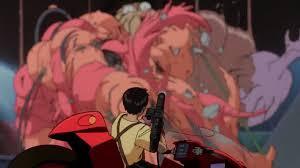
The resonance of "Akira" can be felt in numerous aspects of pop culture. Its cyberpunk vision has inspired countless films, books, and artworks, including classics like "Blade Runner" and "The Matrix." The film's impact on storytelling, animation techniques, and character development is immeasurable, with its fingerprints evident in subsequent anime series and movies.
Themes and Symbolism
Beneath the surface, "Akira" explores profound themes that remain relevant to this day. It delves into the consequences of unchecked power, the clash between societal progress and cultural preservation, and the fragility of human relationships in the face of catastrophic events. The psychic abilities of the characters serve as a metaphor for untapped potential and the dangers of uncontrolled advancement.

Legacy and Continued Relevance
More than three decades after its inception, "Akira" continues to captivate new audiences. Its themes of urban decay, technological obsession, and the thin line between order and chaos resonate in an era defined by rapid technological advancement. The allure of Neo-Tokyo's dark and gritty landscape continues to inspire creatives, evidenced by its influence in music, art, and fashion.
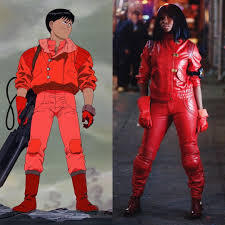
Conclusion
"Akira" isn't just an anime or manga; it's a cultural touchstone that has left an indelible mark on the creative world. Katsuhiro Otomo's visionary work has shaped the way we perceive dystopian futures, human potential, and the consequences of unchecked power. As new generations discover the wonders of "Akira," its legacy is set to endure, reminding us of the power of storytelling to transcend time and captivate the human imagination.
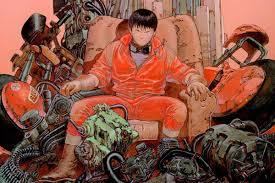
3 notes
·
View notes
Text
AKIRA INSPIRED. Katsuhiro Otomo is a genius. Mangaka, Writer, Director of Akira (anime movie 1988 / manga 1982).
youtube
Akira bike sliding on a horse
130K notes
·
View notes